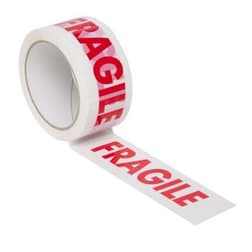The Definitive Guide to Cheating On Your Move!
18 Packing & Moving Hacks You Need to Know!
In case you weren’t wondering, about a quarter of a million people move in Canada every year!
Just think of all those happy moving faces, as they begin prepping for their move. Packing and moving. Laughing loudly, and smiling as they work… sweating, profusely sweating, and cursing, with the scratching of the floors, and the holes with the DAMAGE! So much Damage…… You get the picture… Moving is a pain in the A**! 🙆🏼♂️
The following 18 Moving Hacks will help 😁
Let’s Get ‘er done!
- When you don’t have box big enough...
Just Make One!
If you find that the box you're currently packing is a little to short for your needs, open another box that's the same size, and slide it over top of the one you're packing until it's just the right height. Voila! You now have a taller, perfectly fitting box. Just make sure you tape the bottom and sides extra well.
- When Packing
Label your Boxes On Top & On One Side
This way, when you carry the box, you can easily read the top to see where it belongs. Labeling the side is helpful after you stack those boxes in your new home. You can leave the side label facing out so you can read it. Saving you from having to rummage through a pile a boxes to find what you need.

- Pack an box with the essentials you’ll need after moving
Make things easier on yourself for a few days after your move by packing a couple boxes full of the essentials you’ll need.
Make sure to keep them separated and easily accessible during your move, in a designated "Do Not Pack Or Move" area and include the following items.
Clothing - You'll need a few sets. One to sleep in, one for move day, and another for the day after your move.
Toiletries - Toothbrush, toothpaste, bodywash, lotion, towels, and a few rolls of toilet paper.
Medicine - And other important medical items, like an inhaler or first aid kit.
Chargers - For your phone, and other essential electronics.
Food / Water / Cutlery - For you, and your pets, for the first few days in your new home.
Garbage Bags & Cleaning Supplies - For the inevitable, and dreaded unpacking duties in your new home.
Tools - So when it’s time to reassemble your bed, you know where they are!
Baby Supplies - For those of us moving with newborns, this is THE most important!
Coffee, Tea, Kettle - You’ll probably be tired the next day… Pack accordingly!

- pack your blankets and pillows in your dresser drawer.
These items are typically lightweight, so they won't make the dresser overly heavy to carry, and when your move day is done, you'll know exactly where they are for easy access come bed time!
- Make Some DIY Vacuum-Seal Bags
Vacuum packing your bulkier items like pillows, clothing, and blankets, is a great way to save space. There are several ways to do this without having to buy special vacuum bags. Shrink wrap is a perfect example. If you have some on hand, simply wrap the item you’d like to vacuum seal in shrink wrap. When your done, poke a small hole through the plastic to stick the end of your vacuum into. Once you begin vacuuming, press and squeeze on the item, to help the air inside exit the hole. Once completed, place a piece of packing tape over the hole you created and your finished. You can just as easily use garbage bags or kitchen bags to accomplish the same result.
Great Kitchen packing ideas & hacks
- Use a completely obvious way to mark fragile boxes!
Using a marker to label a box as fragile is a bad idea. The ink just ends up blending in with everything else written on the box. If you want to let your movers know that a box is fragile, using a specially designed fragile tape is a much better idea! It makes spotting a ‘fragile box’ way easier! Especially in the dark, or other low light conditions, allowing your movers take proper care of your stuff!

- Pack the contents of your pantry inside pots and pans to Save Space!
Pots and pans don’t usually fit together well. Use the wasted space wisely and fill them with spices and other items in your pantry. It saves space! For good measure, add a few slices of packing paper to the mix to stop any glass from smackin’ and crackin’
- Stack your plates between paper plates
The kitchen is almost always the most time consuming place to pack. Wrapping each plate individually is the safest bet, but can take quite a while to do. So to save time, buy a bunch of inexpensive paper plates and place them in-between your porcelain ones to stop them from smacking together and breaking during transport. Stack them vertically on their sides in a box, and add a bunch of packing paper to the mix for extra protection. Note that this method will leave you with a heavier than normal box, so be sure to use a smaller one.
- How to Organize Your Junk Drawer & Kitchen Utensils
Rather than dumping your junk drawer into a box, place the contents onto a sheet of packing paper, roll it up, and place it neatly inside to keep things organized. Same theory applies for miscellaneous kitchen utensils and cutlery.
- Start packing Boxes Heavy
Finish Light!
Start packing a box big and heavy, finish light. Get the bigger, heavier items into you box as soon as possible. Finish the box off with lighter items. For example, in the kitchen, pack one or two layers of plates in the bottom of the box, then pack the remaining space with wine glasses or tupperware etc…
- Pack Your Jewelry With Press’n Seal Plastic Wrap
An easy way to keep your jewelry tangle free during the move, is to pack them between a couple sheets of press’n stick then lay them flat in a box. Takes next to no time to do and is super effective.
Need Help With a Move in Toronto?
How to Pack Liquids & Prevent Spills
- Line your boxes with garbage bags to waterproof it!
To prevent spills, line your box with a garbage bag before you pack it. When you’ve finished packing it, tie the bag tightly and use packing tape around the knot to seal it.
- Prevent your bottled liquids from spilling during a move
Unscrew and remove the cap on any ‘already opened’ liquid containers you have, and place a piece of plastic wrap between the cap and the opened bottle, then screw the cap back on. This should prevent any leaks from occurring.
Speed up disassembly & reassembly!
- Snap a pic of the back of your electronics
For the less tech savvy of us out there, this makes things way easier when it’s time to reconnect your electronics after your move.
- Everytime you take something apart...
Put the screws , nuts, and bolts, in a sandwich bag, then tape it to the piece of furniture it came from! Use caution when using tape on furniture though! The adhesives on tape can ruin finished surfaces. Use the tape ‘backwards’ - adhesive side up, and wrap tight. or use a more furniture friendly masking tape (and a lot of it).
Four Time Saving Tricks you can do with packing tape
Need Help Packing?
- How to break tape without scissors
Unlike duct tape, which is made of a vinyl-coated cloth and tearable by hand, a quality packing tape is made of a film, and requires something sharp to cut it. If you don’t have a tape roller available, there are two simple methods, that can break packing tape easily using just your hands.
Option 1
Grab the very edge of the tape between your thumb and index fingers with both hands, as closely together as possible. Press the nail on one of your thumbs against the edge of the tape, and twist. When done correctly, the edge of the tape will split at your nail and, and tear apart very easily.
Option 2
Apply a strip of tape to the box as you usually would, then roll out an additional two inches or so of slack. Next, lift the tape up, over, and back down, folding it so as to stick the adhesive side of the tape to itself, then quickly pull it apart again. It sounds much more complicated than it actually is, but with a little practise, it can be done quickly and consistently with one hand.
- WEAR YOUR TAPE AROUND YOUR WRIST TO AVOID MISPLACING IT
It’s a simple and effective way to keep track of your tape during packing, providing it’ll fit over your hand.
- Tape makes a great door stop
In a pinch, roll up a ball of tape backwards with the sticky side facing out, stick it under your door, and voila, you got a door stop. If the gap beneath your door is to big for that to work, tie a piece of tape around the door handle, and stick the other end to the wall, or somewhere else appropriate.

















 Contact
Contact Services
Services LOCATION
LOCATION